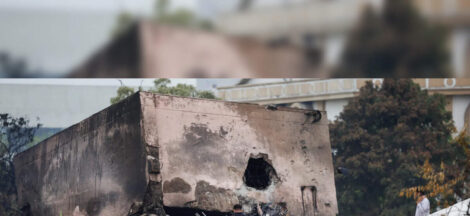Israeli Defence Forces spokesman Brigadier‑General Effie Defrin has announced a fresh wave of airstrikes over western Iran, marking the third such campaign within 24 hours and signalling a deliberate strategy to cripple Iran’s missile capabilities.
Defrin, in a video briefing, confirmed that Israeli Air Force fighter jets overflew surface-to-surface missile launch and storage sites on Wednesday evening, engaging operatives attempting to retrieve or re-arm munitions at facilities previously hit by earlier strikes. He warned that operatives “trying to restore the terror capabilities in the area” would be targeted.
This latest offensive follows two prior waves of airstrikes earlier the same day. The first wave, launched overnight, involved more than 50 jets striking approximately 40 targets in and around Tehran. This included a centrifuge production facility crucial to uranium enrichment efforts and a plant producing anti‑tank missiles destined for Hezbollah and other Iranian proxies. The second wave, carried out Wednesday afternoon, hit more than 20 additional sites in the Tehran region, focusing on missile engines, navigation systems and assembly facilities linked to Iran’s military weapons network.
Israeli Prime Minister Benjamin Netanyahu, in a separate address, declared that the Israel Defence Forces had achieved air superiority over Tehran’s airspace, making it “no longer immune” to aerial strikes. The operational freedom reflects Israel’s sustained efforts to degrade Iran’s ability to retaliate.
Iran has responded with missile and drone barrages towards Israeli territory. State‑owned Kan TV reported that five Iranian missiles were launched, three of which were intercepted—some over Jordanian and Syrian airspace—with no immediate reports of casualties within Israel. Israel’s Magen David Adom rescue service confirmed no injuries in this latest exchange.
The decision to carry out a third wave underscores Israel’s focus on so‑called “left‑of‑boom” strikes—pre‑emptive operations aimed at disabling missile infrastructure before launch. According to Breaking Defence, IDF jets have struck more than 40 missile infrastructure sites, including underground depots, production facilities and launchers, as Iran attempted to reposition assets toward central Iran’s Isfahan region. Earlier assessments suggest that up to 30 percent of Iran’s surface‑to‑surface missile launchers have been eliminated.
This intensifying aerial campaign follows the initiation of Operation “Rising Lion” on 13 June, when over 200 Israeli aircraft delivered more than 330 munitions against nearly 100 strategic targets. The objectives included nuclear sites, missile facilities and command centres. Covert operations attributed to Mossad reportedly disabled Iranian air‑defence systems, enabling Israel to assert full operational control over Tehran’s skies.
Iran’s responses have included a sustained missile and drone programme targeting Israel, with some projectiles successfully intercepted by Israel’s Arrow, David’s Sling and Iron Dome systems. Iranian strikes have inflicted civilian and infrastructure damage—but on a reduced scale following the degradation of its missile launchers.
The conflict has triggered diplomatic reverberations. Iran’s Foreign Ministry summoned Germany’s ambassador to protest Chancellor Friedrich Merz’s support for the strikes. Switzerland’s envoy, representing US interests in Tehran, was also summoned following comments by former US leader Donald Trump demanding Iran’s “unconditional surrender”. European governments have urged restraint even as the US affirmed readiness to support Israel diplomatically—though Washington has stopped short of direct military involvement.
On the ground, civilian populations are bearing the brunt of this escalation. Iranian media reported several policemen injured in Wednesday’s strikes near Tehran’s police headquarters. In Israel, authorities relaxed certain civil‑defence restrictions as missile barrages diminished in frequency.
Analysts suggest Israel’s priority is systematically degrading Iran’s strike capability to mitigate risks from long‑range missile fire. With over one‑third of Iran’s missile launchers reportedly destroyed, and additional waves targeting operatives at salvage sites, Israel appears to be pursuing a comprehensive effort to neutralise threats before they surface.
However, the strategy carries significant peril. Iran’s continuing missile and drone responses have inflicted civilian casualties in both countries. Regional tensions remain high: Tehran has threatened to disrupt maritime traffic through the Strait of Hormuz, and Gulf nations are closely monitoring escalation that could draw in external powers.
As Israel presses its aerial offensive into western Iran, the conflict is transitioning from initial shock-and-awe strikes in Tehran to an expansive campaign across the country’s missile infrastructure. The coming days are likely to determine whether damage inflicted can produce a sustained reduction in threat levels—or whether Iran’s reservoir of long-range missiles and drones can still impose significant damage on Israeli and allied targets.




